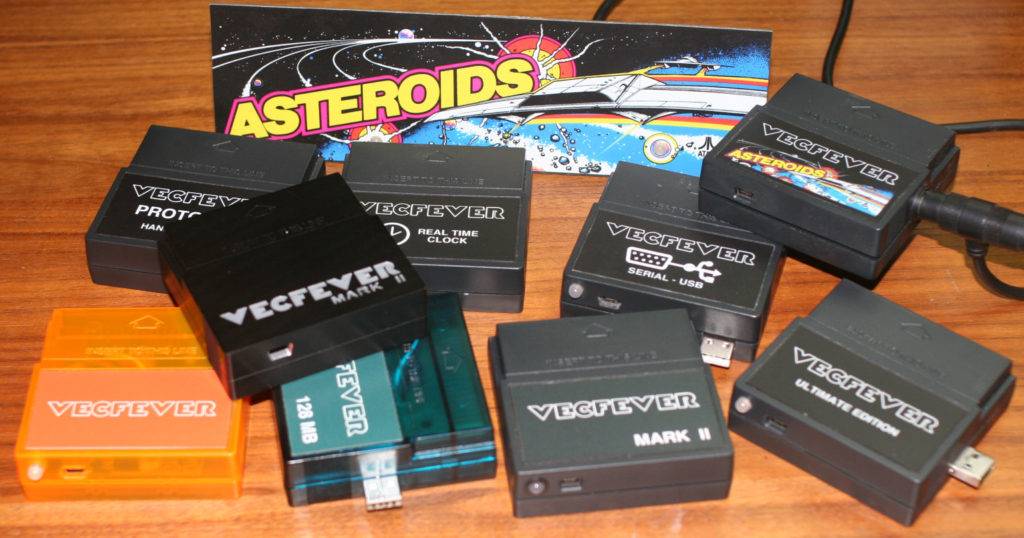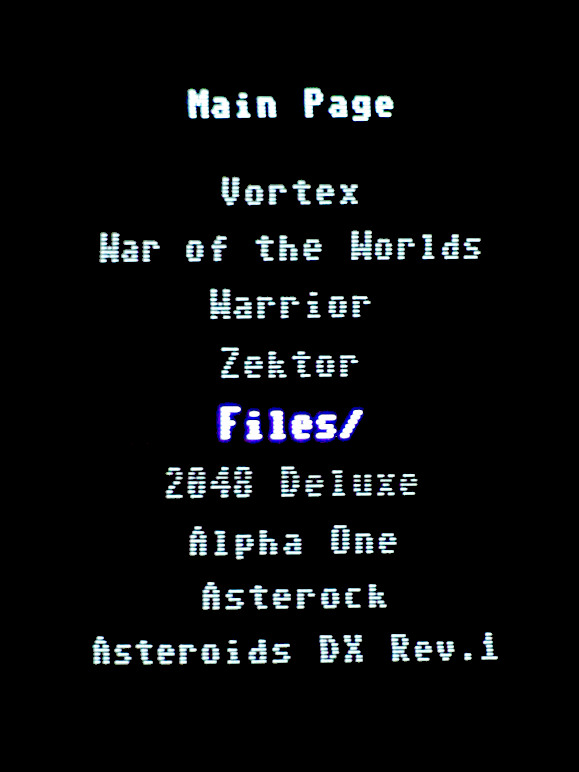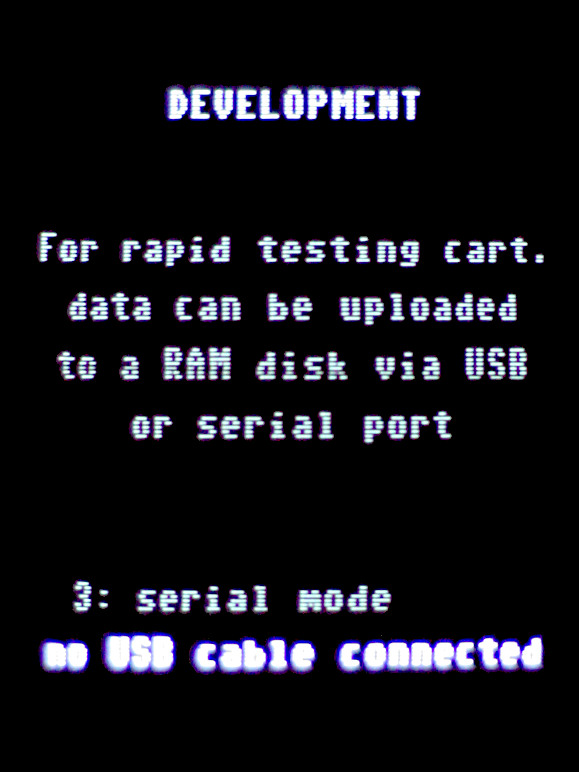The new firmware is fundamentally different so let me take a step back and elaborate:
For some time now the initial firmware was insufficient for my recent developments simply because it started as a Vectrex development system and was held back by the 6809 menu and design decisions based on it. By now I however know that the firmware should offer a lot more – essentially take care of all I/O and esp. handle specific calibration parameters and optionally provide more info. to apps – like ‘boost’able Vectrex output. Every Vectrex is unique and the width, height, zero screen offsets, x to y zero dac offsets and whether they support faster drawing functionality are global parameters which should once be calibrated and used by everything else.
So it was time to develop from the ground up a completely new firmware – this time geared towards native applications whilst keeping the normal Vectrex side. But also several other basic features were important right from the outset: the firmware needs to provide a standalone game mode where one can only switch between games – but not enter and change options. The output needs to be as flexible as possible for non-Vectrex vector displays and one feature I personally wanted to implement: localization for other languages. This list is not complete but I wanted to get across that the new setup is more complex and a bit different. One person asked me already for a visual aid of the basic setup so here it is:

The concept resides around a ‘main page’ – where apps/games whose options are handled by the firmware can be started, at the moment mostly standalone emulators of arcade or Vectrex games. Entering the options – by default pressing 1: on the main page but changeable – gives access to option modules, esp. a ‘main page’ option where the game list of the main page can be selected and the game options themselves be changed. (As of v2.2x the game option is only globally enabled/disabled via the ‘main page’ option: the access itself moved to the main page and file browser: pressing 3: there enters a game’s options.)
Using the file browser – entering Files/ via the main page or via the ‘file browser’ option – gives access to all files on the volume and lets you start Vectrex cart., native and/or hybrid apps, video players or -also new- play ym chip music converted into a ‘vym’ (vectrex ym) format. Both – the file browser and the options access via the main page can be disabled or hidden – which results in the standalone mode.
The visual output now needs to be calibrated once, usually via the video option. However the very first time the V2 firmware is started up a ‘setup assistant’ will help guide through it once for the normal portrait mode. Some parameters are the same for all orientations – like the screen zero offset, screen width and screen height – but some like text parameters can be orientation dependent, which is why the VF uses a calibration parameter for these values for each orientation.
For the new text system three very different text output functions can be selected: the ‘fast’ text output used exclusively by the v1.x firmware versions. A ‘safe’ output which is quite a bit slower but as the name hints at: is safe to use probably anywhere including scopes and arcade vector displays. And a vector text output not using any bitmapped functionality at all. Most ‘v1’ functionality has been reimplemented – the dev. mode, the game patches for the vintage games and home-brews, the vector terminal for vf with 2nd serial are all present (and improved upon). The former ‘BUFFER.DAT’ storage system however is gone and a very different mechanism newly implemented.
As a first introduction this is hopefully helpful – since it is a bit more complex some functionality has been hidden behind an ‘expert’ wall and the defaults are the safe settings (e.g. non-boostable gfx, and ‘boost’ is an expert video option). One last thing: the firmware supports every single VF ever built, up to and including the very first prototype. And everything will be supported going forward, too, of course.

At this point I would like to specifically thank KiWi for his year-long support, Malban for his now decades-long Vectrex shenanigans and Jerome Vincentelli for his unceasing effort translating all those text strings to French..








